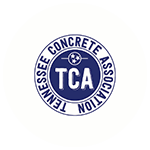How to Prevent Construction Project Delays (24 Tips)
Keep your jobs on schedule and your project costs down with this roundup of practical tips from industry experts.

The Ultimate Guide to Reducing Delays in Construction Projects
Though it’s nearly impossible to completely avoid excusable project delays (any delay caused by an unpredictable circumstance outside your control), there are things you can do to prevent inexcusable delays — that is, delays that are legally considered your responsibility or the results of someone you’re responsible for.
You can also minimize the impacts of excusable delays and make sure they’re covered in your construction contract.
Here are 24 tried-and-true tips from various industry experts you can use to:
- Prevent delays from occurring.
- Lessen the effects that delays have on project timelines.
- Ensure your construction agreements protect your business.
Construction Project Delay Prevention FAQs
How do you mitigate material delays in construction?
Use these tips to mitigate material delays in construction:
- Look at the past performance of your suppliers to identify ones that have historically delivered materials late. Give these suppliers longer lead times, expect potential delays from them, and put plans in place to follow up with these suppliers if issues arise.
- Keep tabs on broader supply chain trends and materials-related industry challenges to plan ahead. For instance, if industry outlets report lumber delays, expect that this will happen to you, too.
- Get more suppliers and solutions. Delays will most likely happen, so it’s best to have backup plans in place.
- Ask your suppliers to keep you updated on the progress of any open orders until they’re delivered.
- Build positive relationships with your suppliers and focus on becoming a preferred customer. You’re more likely to get serviced on time than if you have a negative relationship with a supplier.
- Give SKUs and lead times to your suppliers at least 90 days beforehand.
- Buy materials in advance and store them in your own warehouse.
How can construction project delays be reduced?
To reduce or even prevent construction project delays, we suggest that you:
- Know what typically causes delays on your projects and which causes are preventable. Work backward, then forward. You need to first identify what’s causing the problems so you can come up with plans to reduce them.
- Look at each cause and brainstorm different ways to either get rid of the problem itself, or prepare for common causes of delays if they’re outside your control.
- If supply chain issues like delayed material shipments or unreliable suppliers cause delays in your construction projects, focus on diversifying your vendors and coming up with alternative sources for materials. Also, involve your supply chain team early in key business decisions, such as what kinds of projects to bid on and what types of prospective customers to go after.
- Given industry challenges like supply chain disruptions, the national labor shortage and COVID-19, be cautious when bidding for work. That way, you won’t win a project you won’t be able to fulfill in time, and you won’t sour a relationship with a new or existing customer.
- Anticipate delays when you’re making your project plans. Put in backup options for these plans, and know what you’ll do if, say, a shipment of lumber gets delayed, the project owner issues a change order or several team members call off sick.
- Set up your team as early as possible — including subcontractors.

Avoiding Supply Chain Disruptions
Use these tips to stay ahead of the game in a world of supply chain disruptions, shortages and delayed material shipments — some of the main causes of construction project delays in recent years.
1. Use Past Performance & Industry Data to Plan Effectively
Review the past performance of your current suppliers, anticipate delays based on current supply chain trends and plan accordingly. Harry E. Hough, the CEO of the American Purchasing Society, offered these suggestions if you’re charged with setting up and/or ordering construction materials.

“Use forecasting methods that use data from your own purchase histories as well as industry data. That means you need to keep good records of supplier performance. Those records will help you concentrate your follow-up and ordering procedures on the suppliers and products causing most of the problems.”
Reviewing the past performance of your suppliers will help you anticipate typical lead times, as well as determine who will most likely have issues delivering supplies on time.
In today’s market, it’s also best to just expect delays altogether — even from your most reliable suppliers. While you’ve surely experienced delays from certain suppliers first-hand in recent years, you can get a better picture of supply chain, importing/exporting and other economic trends using industry data like key economic indicators. Then, make backup plans for any materials that won't arrive on time.
2. Diversify Your Supply Chain
Given the current state of the supply chain, relying on only a few suppliers to deliver materials and equipment doesn’t cut it anymore. So, getting more reliable sources is a necessity.
“Use distributors, warehouse suppliers and foreign competitive sources to ensure supply,” Hough said. “Place orders with mills if your volume permits it and you normally would use a distributor. Place orders with distributors if you normally would be using the mill.”
Once you’ve found a new supplier you want to work with, sign a contract with them ASAP. That way, you can mitigate the possibility of delays with them as well.
3. Be Flexible With Materials & Equipment
Brian Turmail, the vice president of public affairs and strategic initiatives of The Associated General Contractors (AGC of America, Inc.), advised that contractors also go beyond just finding more sources for materials and focus on finding alternative materials, equipment and processes for projects as necessary.

“Have a strong working understanding of building component options. Be familiar with other materials that can be used in a similar design and figure out which ones might be available. Understand 3-4 other options that may be available for a project — some that may be different than what was originally spec’d.”
Turmail continued: “Have a trusted relationship with the project owner so you can go to them and say, ‘Look, I know you want this type of equipment or material, but this type of equipment or material is very close to that; let’s use this instead because of supply chain delays.’”
Why is this important? Given the unpredictable state of the global supply chain, you may not be able to secure the specific materials you’ve used in the past within the timeframe you need. That’s why coming up with substitute options ahead of time can serve as a great workaround.
As you’re identifying alternative supplies and materials and/or suppliers, keep quality in mind. “In decades past, we used to request building material manufacturers to make products that are easy to install,” said Ken Pinto, the founder of KENZAI USA, an international supply chain solutions company.
“Today, we are asking them to create materials that are difficult to install incorrectly. Make this one of the criteria on your checklist when approving a substitution, and you could avoid trading a construction delay for a quality problem,” Pinto concluded.
4. Add Stipulations to Your Purchase Agreements
Hough recommended that you use your purchasing contracts to your advantage to ensure on-time deliveries as much as possible. “Build incentives into purchase agreements to obtain prompt delivery or use cost penalties for late delivery,” he explained.
This can also apply to transportation costs. “Negotiate to hold the primary supplier responsible for any excess charges for expedited or premium transportation,” Hough said. “This helps by giving the supplier an incentive to provide prompt delivery to avoid the extra transportation cost.”
5. Require Suppliers to Provide Progress Reports
By having a transparent review of the progress of your open orders, you won’t be caught off guard by delays and will have time to plan and troubleshoot accordingly.
What should you do if you see any orders get delayed? “Follow up with the suppliers on critical items,” Hough suggested. “Be sure and talk to a manager or executive rather than a clerk. Find out what efforts are being made to remedy behind-schedule conditions.”
6. Build Positive Relationships With Your Suppliers
Intentionally nurture your relationships with your suppliers. Having positive connections will help streamline projects down the road. Focus on becoming a preferred customer.
Pinto offered insights into why this is important.

“Not all contractors are missing construction completion dates. Those who have learned how to become a supplier’s preferred customer are getting the materials they need, when they need them. Most criteria for achieving most favored nation status is common sense: pay bills fast, be polite, respond quickly to questions about your order, provide long lead times, be a loyal customer, and above all, be kind.”
7. Give Longer Than Average Lead Times
According to Pinto, ordering materials 24-48 hours ahead of time isn’t realistic anymore with current supply chain disruptions. He explained that the forced minimum lead times have grown to two or three weeks — or even more depending on the material type. As a result, it’s best to provide lead times to your suppliers that are longer than average.
“Providing stock keeping units (SKUs) and date-needed data 90 days in advance gives dealers and manufacturers time to plan for your project needs,” Pinto said. “More than ever before, material suppliers need the extra time to plan. Contractors who go the extra mile to provide much more than the minimum required lead time for ordering are on their way to becoming a preferred customer.”
Not only will this help you have the materials you need in time, but you’ll also strengthen your relationship with your supplier, as we suggested in the tip above.
8. Use a Sales and Operations Planning (S&OP) Process
Supply chain delays and shortages can have such a large impact on your project completion time, your overall budget and your ability to even win a bid. To get ahead of that, involve your purchasing/supply chain teams before your business development team courts a new client or your estimating team submits a bid.
Dr. Jen-Yi (Jay) Chen, an associate professor of operations and supply chain management at Cleveland State University, said that one standard way to do this is an S&OP planning process.
What Is an S&OP Process?
The S&OP process is a supply chain planning process that brings critical business functions together (sales, marketing, operations, purchasing, etc.) to have interdepartmental meetings about major business decisions and how purchasing will affect them.

“More and more, the procurement and supply chain teams need to be the architects early on in the process. If you can’t take into account the potential impacts of uncertainty in our supply chain, such as high materials costs, increasing fuel rates, inflation, etc., you may be losing projects to begin with. You need to have critical discussions regarding how much uncertainty you’ll have in the global supply chain moving forward, and who will be impacted by it.”
Using an S&OP process can help you:
- Stay on budget.
- Know what materials to order and when.
- Ensure your company bids on projects you know you can fulfill in a specified time period.
9. Purchase Material Inventory in Bulk
In the end, you can only do so much to prevent delays from happening. If these delays are caused by larger macro trends or events (pandemics, wars, labor shortages, etc.) as they often are, you’re at the mercy of the global supply chain.
Alan Sparkman, the executive director of the Tennessee Concrete Association, expanded on this further: “The short answer is [you] can’t ensure timely deliveries of materials — it is not something [you] can control by switching vendors because every vendor is facing the same short supply situation.” To combat this reality, he suggested that you “buy in advance (when possible) and become your own warehouse.”
“Anyone in construction who hasn’t started warehousing their most used materials should do so,” Ralph Severson, the owner of Flooring Masters, said. “It eliminates supply chain holdups, and can actually make the company money, depending on the cost of the materials versus the current cost.”
Drew Mauro, the operations manager of Green Wave Distribution, previously managed a lumber yard in the northeast and highlighted some tips he saw builders use there — especially given the increasing costs in materials.

“When material prices started skyrocketing two years ago, many of the savviest builders made agreements with lumber yards where they could purchase the entire order upfront and store it at the lumber yard. The lumber yard would pull their order, set it aside, and make deliveries as needed. This locked in the price for builders and also ensured that the material would be available.”

Bidding Advice to Plan Ahead
Here are some tips to use before you even bid on a project that can help you avoid project delays down the road.
10. Be Cautious When Bidding Work
To protect your reputation and track record with a client (especially a new one), Turmail advised that you be cautious when deciding to bid on work at times when industry delays are more common.
“Be prudent, especially when it comes to predicting costs and timelines,” he said. “Don’t tell the owner you can bid on a project that will take six months if you’re unsure if you can complete it within that timeframe. You need to set the right expectations from the beginning.”
11. Bring the Right People to Pre-Bid Meetings
“One of the most important things you can do when you go in and develop that business relationship — and before you make that bid — is to not just have the business development team attend,” Turmail said. “Have the project manager, the superintendent — the people who are running the jobsites — in the room. That will prevent your business development rep from overpromising, and set the right relationship from the beginning.
“Most owners would rather be told upfront what's doable upfront than find out afterward,” he added. “They don’t want to find out about the delays after the fact.”
Kyle Shirley, the owner of Sol Vista Roofing, echoed this.

“I cannot stress this enough: have a pre-job meeting to include the client, the GC [general contractor] (in our case), our rep who sold the job, and our roofing superintendent. These are all the main parties that can get in front of potential miscommunications that would otherwise happen later down the road.”

Writing Successful Project Agreements
Here are three tips for drafting and reviewing your contracts.
12. Add Provisions to Your Agreements
While you can’t stop an outside party (the project owner, architect or engineer) from interfering with a project, you can add provisions to your contract to help in case this happens — and possibly even prevent this from being an excusable delay, or at least minimize its impact.
“The best tactic that we have used is adding specifics into our agreements that specify a daily work stoppage fee due to delays that originate from the client,” Shirley said. “These can include deviations from building plans that were not shared and repeated change order requests that affect our work schedule.”
“A clause can also be written within the contract to ensure that change orders have a prescribed timeframe for approval,” said Benjamin Mensah, the founder and president of B.A.K Construction Inc. “Any time past this timeframe will be compensated for as an extra cost incurred for delaying the project.”
A third provision Mensah suggested to work around change orders is to cap the amount of change orders for the contractor and the client — for example, at $900,000,000 in the contract for all change orders.
13. Read the Fine Print Before You Sign
Since project delay types and liabilities are ultimately defined in your contract, pay special attention when reviewing provisions. Know what your contract says about delays, and make sure it includes specifics.
“It is important for contractors to know what the requirements are in their contract to give notice, where to give notice, how to give notice and what the notice must contain,” said Thomas L. Rosenberg, a shareholder from the law firm Roetzel & Andress. “Often, it must contain key information about the delay, the cause of the delay and the potential costs to be incurred. Knowing these contract provisions can save contractors time and money.”
Beyond just these details, you’ll also want to make sure your contract includes actionable solutions to delays.
“The best step to prepare for delays is to review the construction agreement, and make sure that it provides for adequate remedies in the event of such delays, not just additional time to complete the work,” Laura M. Garcia, an associate at the law firm Weinstein + Klein, advised.
14. Include Stipulations in Subcontractor Agreements
It’s not just the project owners or outside forces you have to think about when writing your contracts. Subcontractors contribute greatly to project completion dates as well. So, how do you prepare for issues with your subs?
“The best answer is to be proactive instead of reactive,” Taylor Stroop, the operations manager at Stroop Design & Construction Inc., said. “Set your expectations (written and verbal) to the subcontractors.”
He continued: “When [we] aren’t able to get the subcontractor on the site, we refer them to our subcontractor contract that includes stipulations on ‘Time of Completion’ and ‘Liquid Damages.’”
Stroop said these two sections typically include the following information:
- Projected days of completion.
- That it is the subcontractor’s responsibility to refer to the scheduling software to forecast start dates.
- Fees associated with liquid damages for incomplete work and delaying the project deadline.
“If all else fails, the liquid damages seem to resolve any issues we have with sub-contractor scheduling,” Stroop explained.

Setting up Projects Strategically
Won the bid? Follow these project setup tips to be successful from the start.
15. Prepare for Delays When Planning Your Project
When scheduling your project, anticipate delays — and plan accordingly.
“Contractors should be aware of any notice requirements or other conditions precedent that may be in place in the event they do encounter delays on the project, and must be prepared to act quickly once a potential delay is encountered,” Garcia said.
As you’re planning your project schedule, put in contingency plans for common delay causes like labor shortages, potential weather delays and supply chain delays.
“Warehouses and distribution centers are reporting delays of six months or longer in some cases, so get ahead of that for any project possible,” said John Geddes, the founder and director of sales at East Coast Storage Equipment. “If that means making your total project planning timeline, that is still likely going to be worthwhile until the current supply chain problems start to improve.”
16. Schedule Your Subcontractors Early
Subcontractors are affected by material delays and labor shortages as much as general contractors. To have your subcontractors lined up when you need them, Tyler Riddell of eSub Construction Software advises that you schedule them at least three months ahead of time.
17. Plan Ahead for Inspection & Permitting Delays
Because of the pandemic and labor shortage issues, many companies have experienced delays in getting inspections and permits for projects.
Since not getting them in time is considered the fault of a contractor in most construction projects (i.e., an inexcusable delay), it’s best to expect these delays and get the process rolling as soon as you can.
18. Partner With a Reliable Waste Removal Provider to Minimize Dumpster Delays
Besides delays in material shipments, inspections and permits, contractors have identified dumpster service delays as another cause for project delays. So, when you’re setting up dumpster rentals for your jobsites, keep reliability in mind.
The fact is, dumpster delays sometimes can’t be stopped. There are too many factors outside of a hauling company’s control that cause these delays.
But you can work with a waste provider that mitigates the possibility of delays by delivering dependable service and proactive account management, like Dumpsters.com.

Building the Right Labor Force
Use these tips to make sure you have enough qualified people on-site for your projects and retain them during and after the project.
19. Set up Your Team Early
There’s no one-size-fits-all way to solve a labor shortage problem. Instead, you have to plan for it. Expect that it may take you a while to build your team for a project, and start recruiting as early as possible.
20. Treat Your Team Well
This sounds deceptively simple, but in today’s market, retention is more important than ever. By focusing on retention efforts in addition to recruitment efforts, you can keep workers longer, spend less time training, and save money — all while building morale in the process.
Turmail described some of the retention efforts and workplace culture traits that he’s seen construction companies use to keep their talent — companies he describes as having built “strong, familial-like relations with their teams.”
“Do stay interviews one month in,” he said. “Meet with your workers and ask, ‘How are you feeling? How are things going? What are your ambitions?’ Have them in a sincere way. Ask yourself, ‘Is there a path for someone who’s hardworking? And is that visible for them?’ Make sure they feel they're heard and their ideas can make the project more productive.”
“These guys are coming out of COVID on edge,” Dr. Sean Dixon, the owner of Simply Tiny Development, said. “You have to pay them on time and trust them. Quality workers understand the value of completing the job and being paid on time.
“The social contract has changed, and industry standards need to be updated to reflect what is happening,” Dixon continued. “Ensure the quality of labor and work; give them a small bonus or incentive. Pay them in phases instead of waiting until the job is completed. Foster teamwork. Be a leader and set an example.”

Executing the Project Professionally
Use these tips to prevent delays or lessen their impacts when they happen during a construction project.
21. Leverage Construction Technology
Using construction technology can help with all aspects of a project, including preventing project delays. Depending on which app or software suite you use, you can:
- Track all phases of a project from start to finish.
- Notify your subcontractors about schedule changes.
- Streamline communication between all parties involved in a job.
- Contain easily-accessible backup plans for delays to stop them from halting an entire project.
Here are some types of software to consider if you’re not already using them:
- Takeoff software
- Estimating software
- Scheduling software
- Jobsite management software
- Project management software
22. Provide All Parties With Important Information
Before you begin a project, establish good relationships with everyone — the project owner, builder, architect, engineer and subcontractors — and ensure they’re on board with all aspects of it. Have every party review the plans. Make sure there are no questions left unasked. Be upfront about any potential issues that may occur, such as supply chain holdups.
“Both the builder and trade partner must have excellent communication prior to commencement of any work,” Erik Cofield, an executive business coach with the Association of Professional Builders (APB), explained. “If the two parties are not perfectly in sync at the start of the project, they most certainly won’t be down the road during the project.”
“Aligning on goals and timelines early on, as well as how to react should delays occur, will help project teams execute successful projects,” said Brantlee Underhill, the managing director, North America, of Project Management Institute (PMI).
23. Keep Open Communication Throughout the Project
Once you’ve started the project, communicate clearly — and often — with all stakeholders involved. “Communication can help provide a solution for many requests that may result in project delays,” Underhill said.
Here are some pointers to use to keep your team updated with important details and get ahead of potential delays:
- Meet regularly. “Having a regular cadence of meetings to discuss projects and their progress, coupled with good communication, is imperative throughout a project’s lifecycle,” Underhill explained. “There’s no such thing as overcommunicating when it comes to construction projects — whether you’re communicating a supply chain issue or looking to fill or backfill talent when the need arises.”
- Have a designated point person for the project. “The most common culprit of an inexcusable construction delay is the lack of a reliable contact person,” Mensah said. With one person in charge of managing the project, fewer things will fall through the cracks, and everyone will know who to turn to for questions or concerns.
- Let the project owner know about unavoidable issues. If bad weather or other unexpected delays occur, let your customer know immediately. Eric Travers, a director with the law firm Kegler Brown Hill + Ritter, explained:

“Provide prompt written notice to your customer of impacts to the project schedule to allow the customer to possibly mitigate delays on their end. They can collaborate with you on what you might be able to be done on your end, even if it requires additional costs (i.e., authorizing a change order) to expedite shipping/work overtime, etc.”
24. Document Daily Progress on Projects
Use technology to your advantage to keep meticulous records of your project daily.
“The builder remains in the driver's seat managing the project between the consumer and all other parties,” Cofield said. “That documentation and communication, photos, drawings, plans, etc. should all be documented in an online project management system.”
Craig Townsend, a lecturer at Clemson University and consulting firm owner, mentioned three ways you can do this:
- Keep meeting minutes, including the typical information recorded in any meeting’s minutes (subject, date, location of meeting, names of people attending and absent people, etc.).
- Have an “official” camera on-site for use by the project manager (or designated representative) with a timestamp imprinted on every picture taken. “These photos should be carefully stored/preserved for future retrieval,” he said.
- Have project managers (or superintendents) keep a daily job log. “This will preserve information, on a daily basis, such as: weather conditions, the work performed for the day, the number of workers on-site, equipment along with the equipment of the equipment, any material deliveries, etc.,” Townsend explained.
More Resources to Improve Jobsite Efficiencies
With 24 tips to reduce construction delays in your toolbox, you’re on your way to completing your jobs on time and on budget.
Looking for other ways to improve your jobsites? Check out these posts:
Expert Contributors

Harry E. Hough
Harry is the CEO for the American Purchasing Society in Aurora, IL. He has been a consultant to companies in both manufacturing and the service industries. Harry has held seminars in major cities from coast to coast and taught courses at Wayne State University in Detroit and at several colleges in the Chicago area.

Brian Turmail
Brian is the vice president of public affairs and strategic affairs at The AGC of America in Arlington, VA. A senior marketing and communications executive with a combination of crisis communications, strategic development, advisory, management experience — and good humor — Brian has generated broad media and public support for frequently controversial policy and programmatic initiatives.

Erik Cofield
Erik is an executive business coach for custom builders with the APB in Spring, TX. He is also a certified graduate associate with the National Association of Home Builders (NAHB) and is a senior-level business strategist and manager. With over two decades in the industry, Erik has provided management consulting services for many types and sizes of companies in the construction industry, from real estate developers to software companies.

Benjamin Mensah
Benjamin is the founder and president of B.A.K Construction Inc. in the Bronx. With a background in philosophy, his expertise varies from contract adherence and risk management to quality control and scheduling.

Craig N. Townsend
Craig is a part-time lecturer at Clemson University in the Nieri Family Department of Construction Science and Management in Clemson, SC. He is also the owner of a consulting firm, Optimal Path Consulting, LLC, which provides planning and scheduling services in the construction industry.

Jen-Yi (Jay) Chen, Ph.D.
Jen-Yi (Jay) is an associate professor of operations and supply chain management at Cleveland State University in Cleveland, OH. His recent research lies at the interface of marketing and operations management with focuses on pricing and profit optimization, inventory management, sustainability issues and advanced technologies. At CSU, he teaches business analytics and international operations, and advises medical centers and manufacturing companies through research and consulting projects.

John Geddes
John is the founder and director of sales at East Coast Storage Equipment. He has years of experience in the material handling industry and is committed to providing reliable solutions for equipment procurement and related services for his clients.

Ralph Severson
With 30 years of remodeling experience, Ralph holds several certifications such as wood and tile installation, Schluter-Systems and mold abatement. What started as a hobby 30 years ago has grown into managing several projects and 13 employees every day as the owner of Flooring Masters.

Drew Mauro
Drew has extensive background in construction, building materials and real estate. As a former lumber yard manager, Drew has a keen understanding of the building process. He helped found Green Wave Distribution LLC in the suburbs of Providence, RI, in 2021 to grow the use of energy-efficient heating products in the building industry.

Eric Travers
Eric is a director in the construction law practice group at Kegler Brown Hill + Ritter in Columbus, OH. He works regularly with owners, general contractors and subcontractors on all aspects of construction contract drafting and disputes, including those arising from change order issues, like delay claims, changes, acceleration, damages, changed conditions and more.

Ken Pinto
Ken is the author of “How Much Is the Milk?”, a practical roadmap for business leaders interested in solving supply chain issues, and founder of KENZAI USA, an international supply chain solutions company. He is an accomplished carpenter, mason, plumber, electrician, steelworker, heavy equipment operator, surveyor, project manager and a 21-year veteran of the commercial construction industry, with more than 40 years of building industry experience coursing through his veins.

Brantlee Underhill
With 25 years of association experience, Brantlee serves as managing director, North America, at Project Management Institute (PMI) in Philadelphia. She’s responsible for broadening PMI’s reach and deepening its impact in North America amongst organizations, individuals and communities, empowering people to make their ideas a reality.

Thomas L. Rosenberg
Based in Columbus, OH, Tom focuses his practice on construction law and civil litigation and leads Roetzel’s Construction Law practice, which has been recognized by US News & World Report as one of the best law firms nationally and regionally for construction and construction litigation from 2012 to 2021. Tom is a Fellow in the American College of Construction Lawyers and serves on its Board of Governors. He is a past Chair of the American Bar Association Forum on Construction Law.

Dr. Sean Dixon
Sean is the owner of Simply Tiny Development, a North American tiny home and van conversion builder based in Lakewood, CO. Sean received a doctorate in management from Colorado Technical University in 2020. His passion for sustainability led him to start Simply Tiny Development, which aims to create system change in home construction and corporate management techniques.

Kyle Shirley
Kyle is the owner of Sol Vista Roofing in Denver, CO. Kyle’s roofing company serves commercial and residential clients in new construction and roof replacements.

Taylor Stroop
Taylor is a branch operator at Stroop Design & Construction Inc. He manages day-to-day operations and oversees projects in Chattanooga, TN, and the surrounding areas. His attention to detail and constant communication provide exceptional delivery of projects for their clients. Taylor’s projects have included residential, commercial and dental projects.

Alan Sparkman
Alan has served as the executive director of the Tennessee Concrete Association in Smyrna, TN, for nearly 25 years, and is committed to educating people in the construction industry. He currently holds 15 technical and professional certifications related to concrete, construction and association management and has been interviewed recently by several news organizations about the impacts of the current supply chain crisis on construction.

Laura M. Garcia
Laura is an associate attorney at Weinstein + Klein, P.C., with offices in both New York City and Morristown, NJ. Laura is a natural-born creative who incorporates her uncanny ability to think outside of the box into all aspects of her life and legal practice. She finds fulfillment in creating her clients’ vision and has a special interest in ensuring that all businesses, especially minority- and women-owned small businesses, have the right people in their corner.
Other Sources
Anaplan. The Ultimate Sales and Operations Planning (S&OP) Process Guide. Retrieved from Anaplan.com
Hippold, Sara. 5 Ways to Mature Sales and Operations Planning (S&OP) in Supply Chain. (2021, April 12). Retrieved from Gartner.com
Riddell, Tyler. 6 Super Helpful Tips to Avoid Common Construction Delays. (2017, June 15). Retrieved from Capterra.com
What Do You Think?
Have more tips to prevent construction delays? Head over to Twitter, Facebook or LinkedIn,
and use #dumpstersblog to join the conversation.






